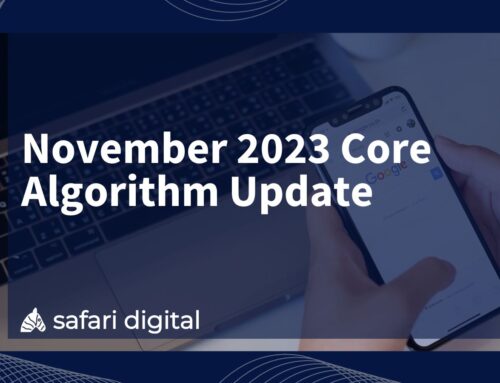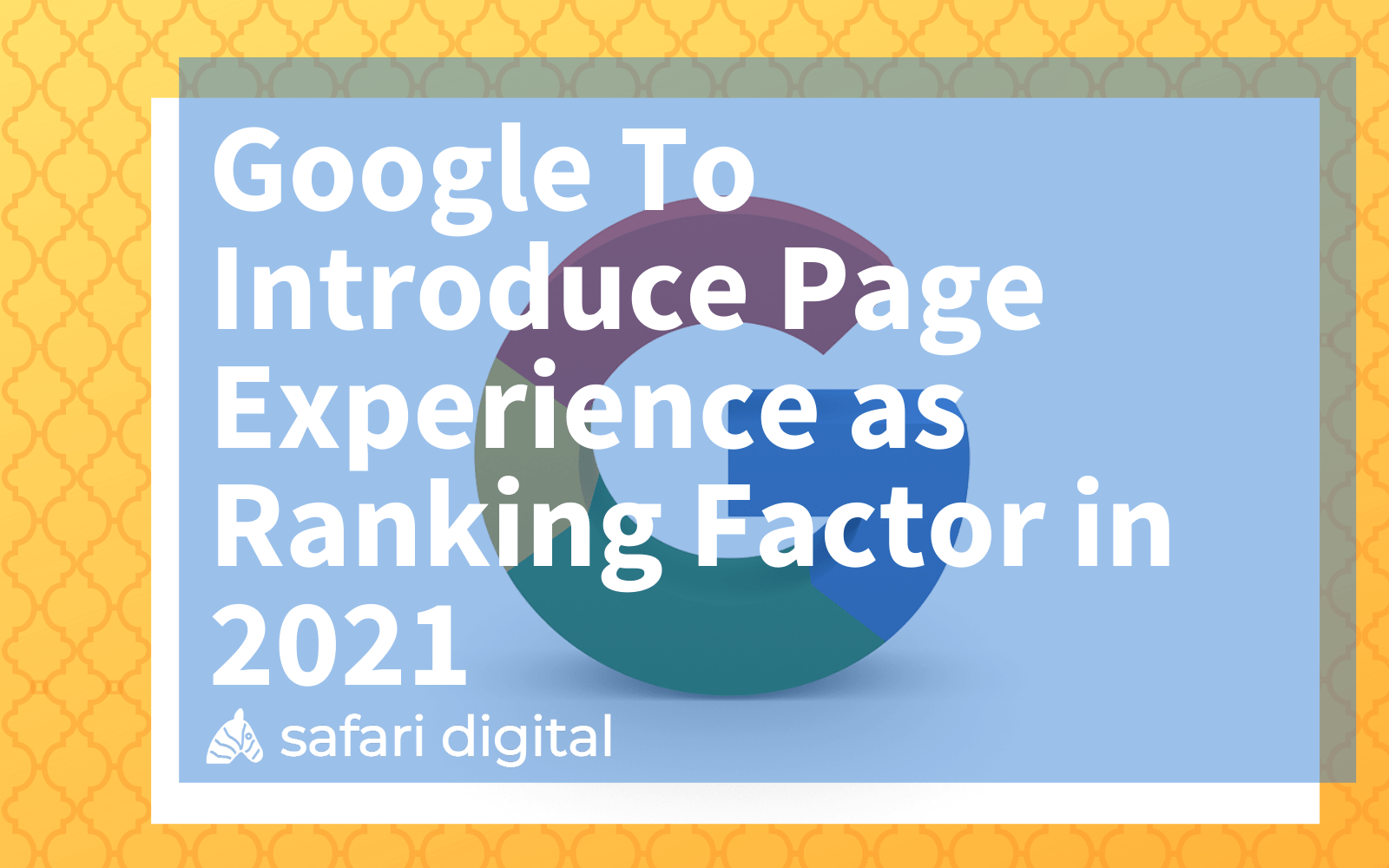
Google announced on the 28th of May that they are in the early stages of changing the way their search algorithm assesses and ranks web pages. The Google page experience update will revolve around the user experience of each page, analysing the overall engagement a user has with the page. Aptly named ‘page experience’, this new ranking signal is set to be implemented into Google’s algorithm at the beginning of next year.
Google Page Experience will be a new ranking factor designed to assess web pages based on how users perceive the experience of engaging with a landing page. This means that if Google deems a site to have a poor page experience for users, they may not rank those pages as they are now. Furthermore, a positive page experience may increase rankings in search engine result pages.
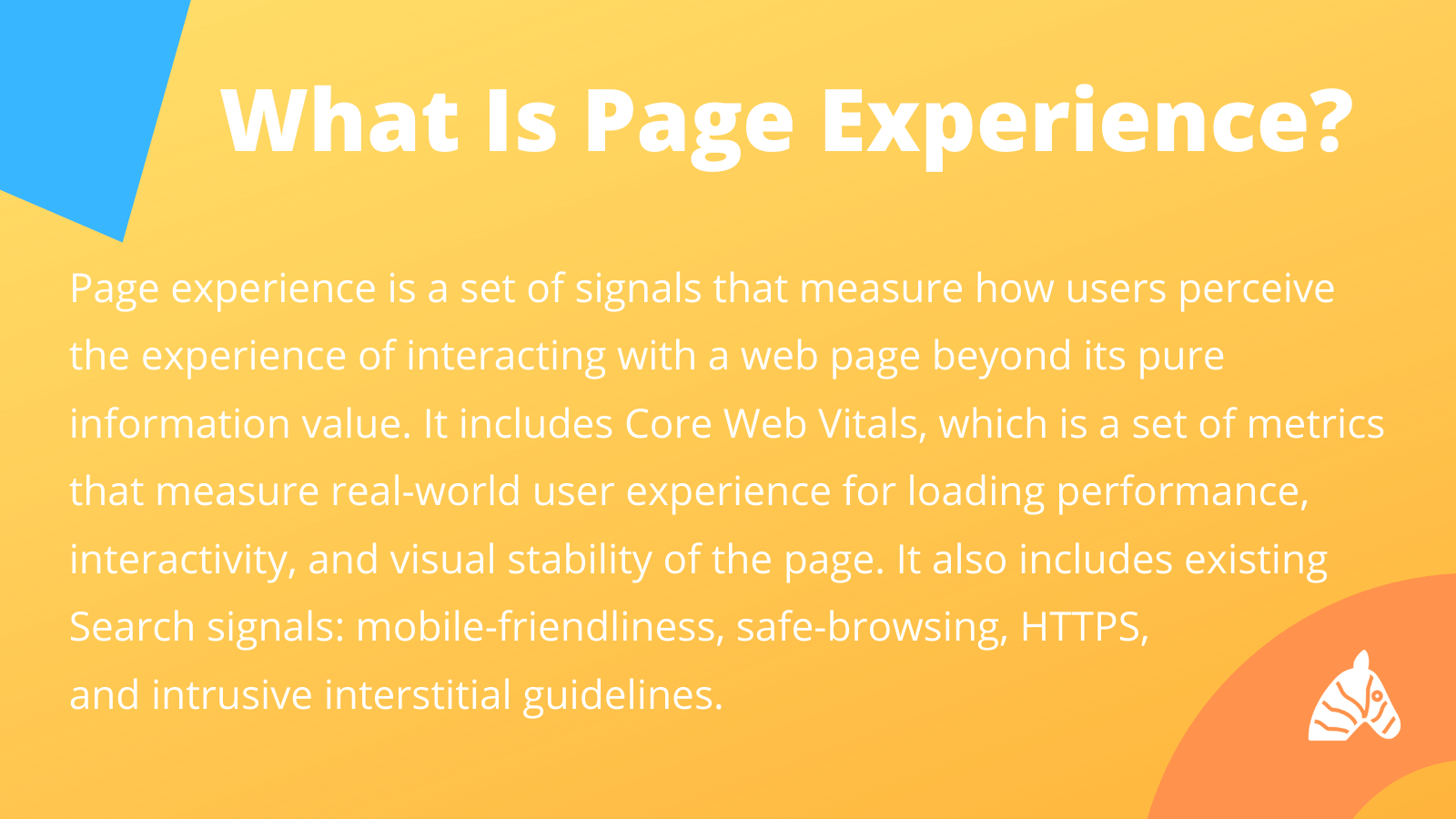
What Is Google Page Experience?
According to Google, page experience is “a set of signals that measure how users perceive the experience of interacting with a web page beyond its information value.”. The ranking signal will base on Google’s Core Web Vitals – Largest Contentful Paint (LCP), First Input Delay (FID), and Cumulative Layout Shift (CLS).
- LCP measures the loading performance of a page. To provide a good user experience, LCP should occur within 2.5 seconds of when the page first starts loading.
- FID measures interactivity. To provide a good user experience, pages should have a FID of less than 100 milliseconds.
- CLS measures visual stability. To provide a good user experience, pages should maintain a CLS of less than 0.1.
Page experience metrics will rely heavily on these Core Web Vitals – the ranking signal will address and analyse essential metrics of a healthy site to determine the experience quality of each page. Wrapping your head around core web values can be a little tough, especially considering they are not set in stone and are subject to change.
“Core Web Vitals are a set of real-world, user-centred metrics that quantify key aspects of the user experience. They measure dimensions of web usability such as load time, interactivity, and the stability of content as it loads (so you don’t accidentally tap that button when it shifts under your finger – how annoying!)” – Google
The Google Page Experience ranking signal will also include existing search signals such as mobile-friendliness, safe browsing, HTTPS, and intrusive interstitial guidelines.
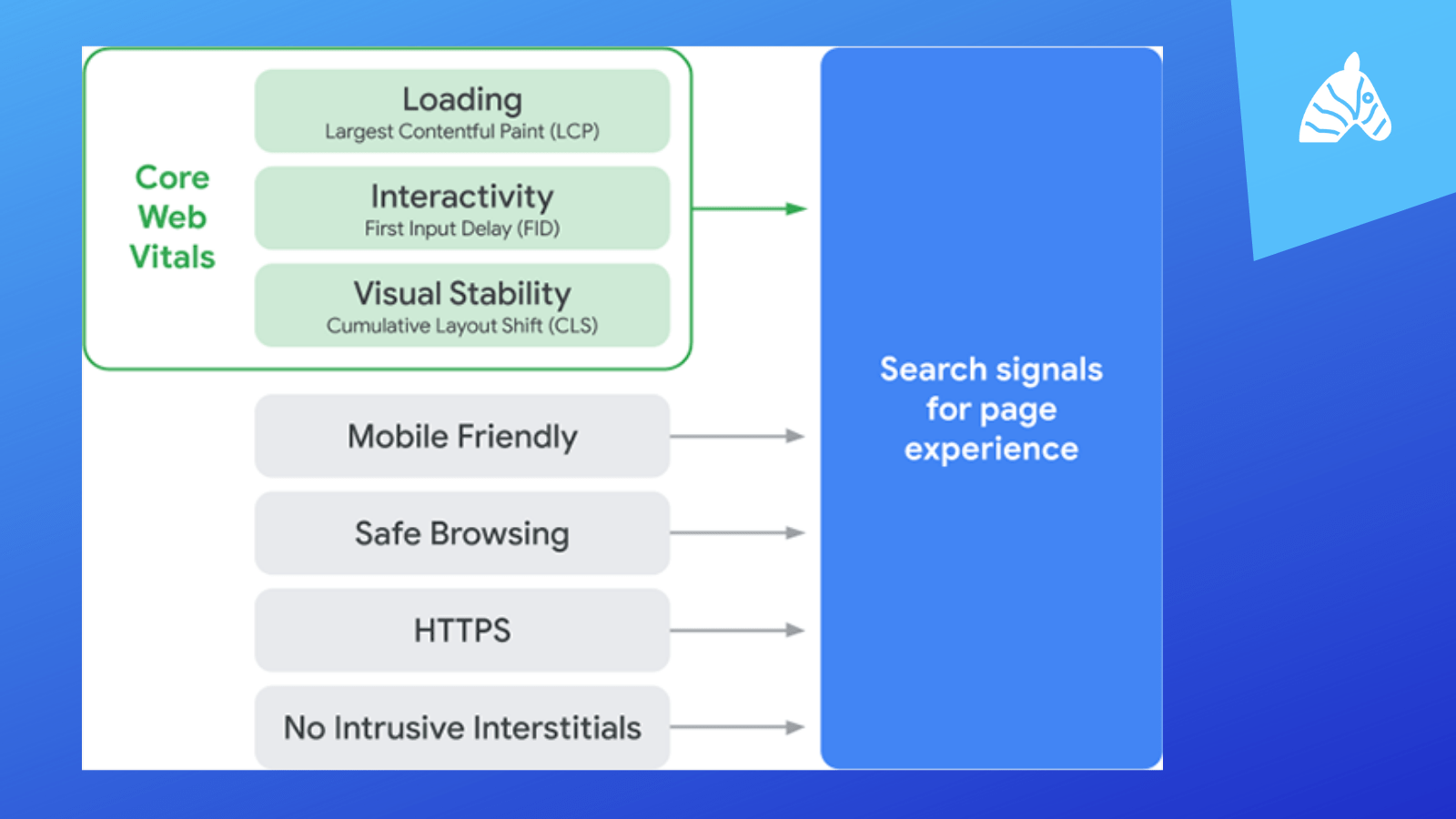
Evaluating Page Experience According to Google
Research has revealed that users prefer websites with a great page experience. Over the years, Google has created a foundation of user experience assessments to add to its ranking algorithm. This includes page load speed, mobile-friendliness and security. With the addition of the core web vitals, Google is working towards improving the way it evaluates the overall experience provided by a page. By combining its core web values with user experience signals, Google aims to help more webmasters to design and create pages that users are actually enjoying.
As of yet, there are no real tools to measure the experience of a page. There are several existing ranking signals that we know will contribute to the Google page experience update; mobile-friendliness, page load speed, security, and intrusive interstitials that we can measure. There are also different tools to measure and report Core Web Vitals.
AMP Will No Longer Be A Requirement for Top Stories
As it currently stands, the pages competing for Google’s top stories section are only AMP (Accelerated Mobile Pages). That is, to say, they are technically hosted on Google’s website and are a part of a publishing technology that loads web pages in less than one second and use ten times fewer data than regular web pages.
Launched in 2016, Google created the AMP technology to allow for web pages that load almost instantly on mobile phones. Since its introduction, over 25 million domains have published more than 1.5 billion AMP pages. Designed for news publications and media outlets, Google has since given preferential treatment to AMP pages in search rankings and would only allow content in Top Stories section that was AMP.
This new Google page experience update means that Google will no longer require AMP for the mobile version of the Top Stories section in Google Search. Instead, page experience will help to determine what content should sit in the Top Stories section on Google. This won’t be implemented until sometime in 2021, but it is an essential factor to note that page experience will be a crucial factor when deciphering what pages show in the Top Stories section.
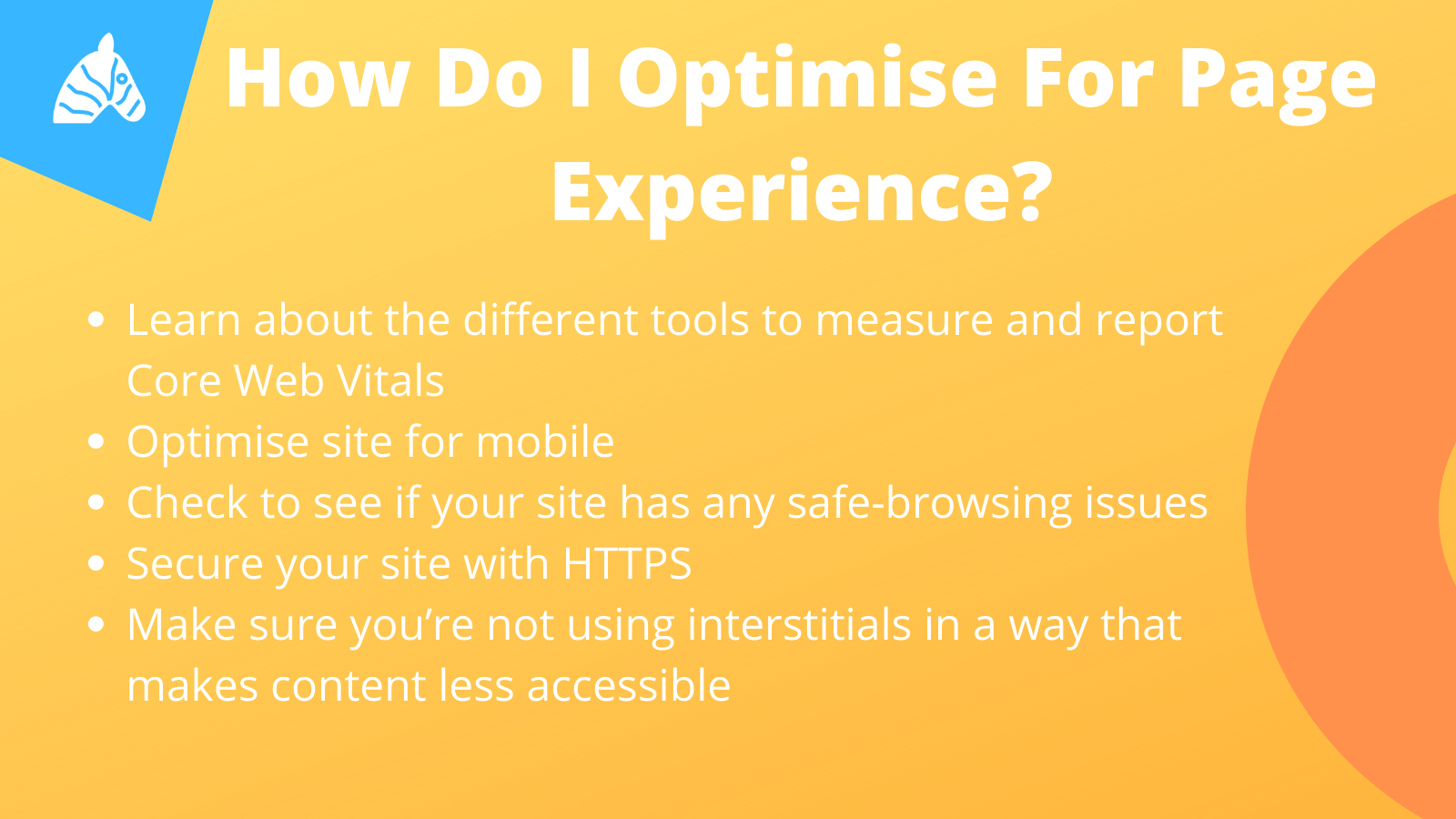
The Spotlight Remains on Content
Google has made it abundantly clear that while this update will be of importance, they will still place a significant emphasis on high-quality content. “While all of the components of page experience are important, we will rank pages with the best information overall, even if some aspects of page experience are subpar. A good page experience doesn’t override having great, relevant content. However, in cases where they are multiple pages that have similar content, page experience becomes much more important for visibility in Search”.
How Can You Prepare?
Don’t get too hung up on these new ranking signals. These updates aim to improve the overall experience a user may have online. If you’re providing exceptional content and pages that users can access and read effortlessly and efficiently, you’re optimising for Google page experience already.
If your website is slow to load or there are serious accessibility issues that are causing users to bounce away from the website, it’s worth speaking with an SEO consultant who can provide some guidance and potential fixes for these issues.
Remember, the new update is only in its infancy – Google will provide at least six-months notice before these changes are officially rolled out. There is no need to take drastic action as the update will not be put out until next year. Given the current climate with COVID-19, the search engine giant is doing all it can to give site owners notice on impending changes to the ranking algorithm.




